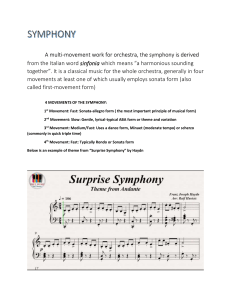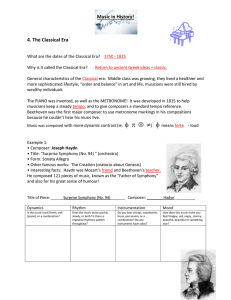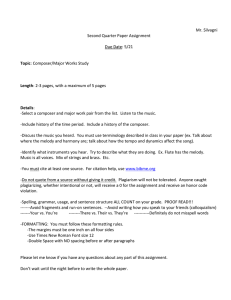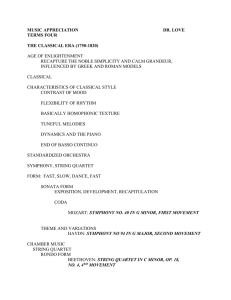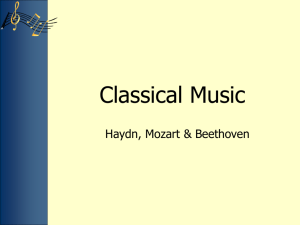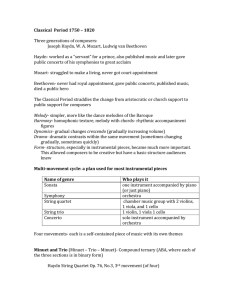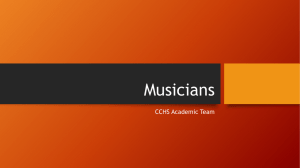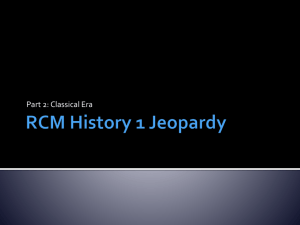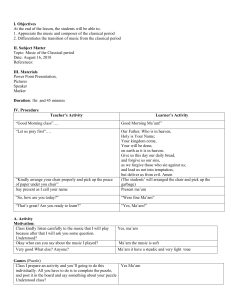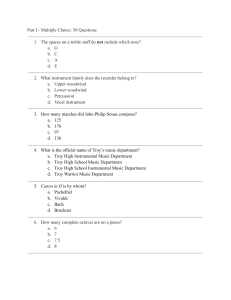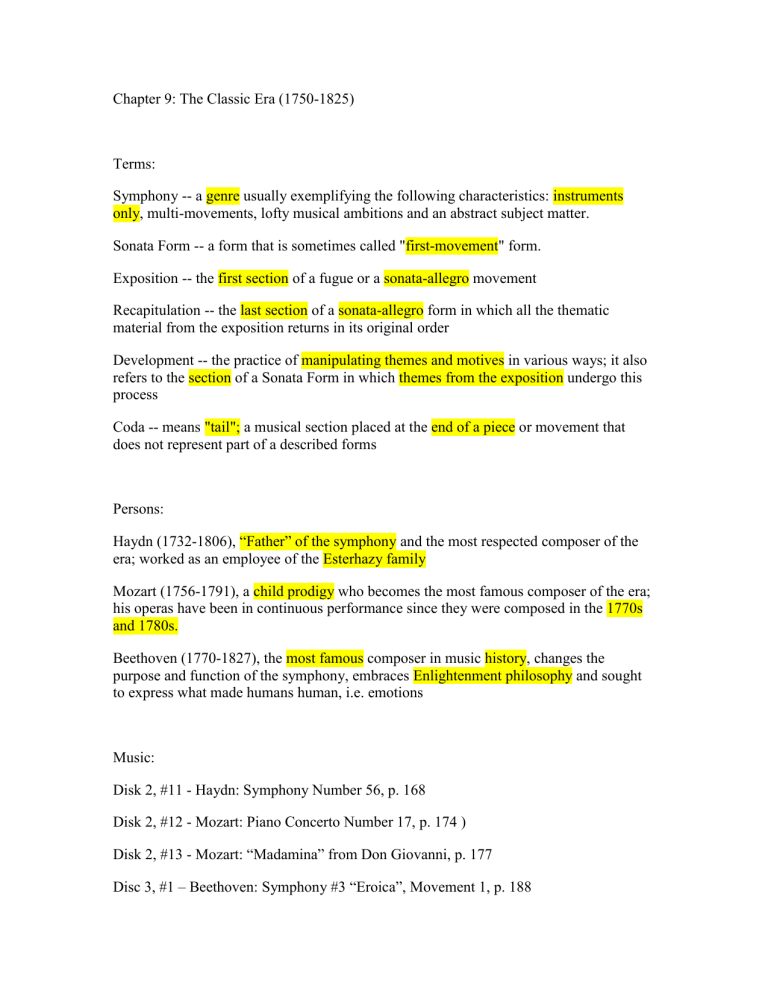
Chapter 9: The Classic Era (1750-1825) Terms: Symphony -- a genre usually exemplifying the following characteristics: instruments only, multi-movements, lofty musical ambitions and an abstract subject matter. Sonata Form -- a form that is sometimes called "first-movement" form. Exposition -- the first section of a fugue or a sonata-allegro movement Recapitulation -- the last section of a sonata-allegro form in which all the thematic material from the exposition returns in its original order Development -- the practice of manipulating themes and motives in various ways; it also refers to the section of a Sonata Form in which themes from the exposition undergo this process Coda -- means "tail"; a musical section placed at the end of a piece or movement that does not represent part of a described forms Persons: Haydn (1732-1806), “Father” of the symphony and the most respected composer of the era; worked as an employee of the Esterhazy family Mozart (1756-1791), a child prodigy who becomes the most famous composer of the era; his operas have been in continuous performance since they were composed in the 1770s and 1780s. Beethoven (1770-1827), the most famous composer in music history, changes the purpose and function of the symphony, embraces Enlightenment philosophy and sought to express what made humans human, i.e. emotions Music: Disk 2, #11 - Haydn: Symphony Number 56, p. 168 Disk 2, #12 - Mozart: Piano Concerto Number 17, p. 174 ) Disk 2, #13 - Mozart: “Madamina” from Don Giovanni, p. 177 Disc 3, #1 – Beethoven: Symphony #3 “Eroica”, Movement 1, p. 188
